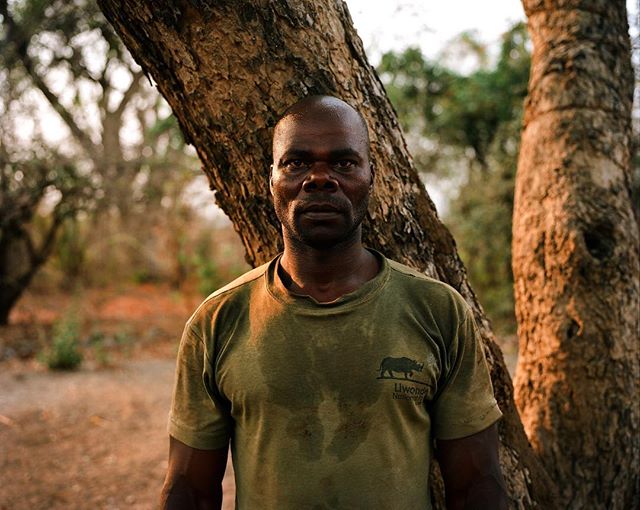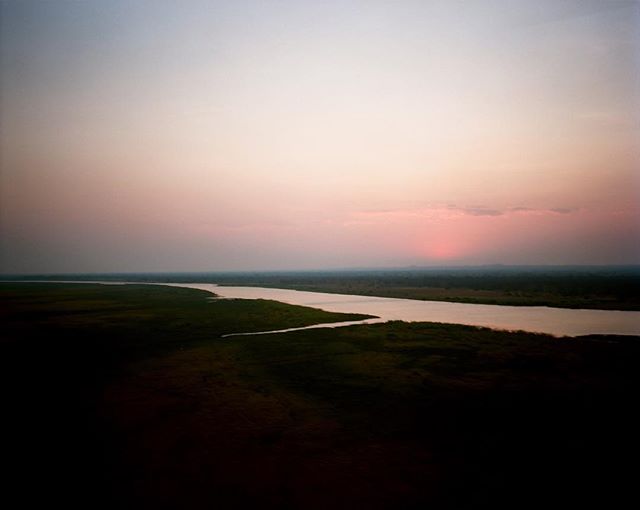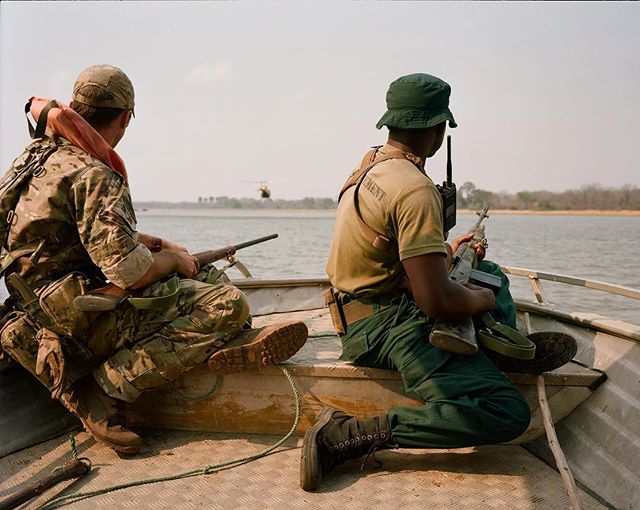Making hand photographic c-type prints for a collector
Exhibitions






They scare me to absolute death, and I love them to bits in equal measure. There is nothing that frightens me as much as that close proximity deep growl, particularly when in a tent at night.
I’ve tracked them, documented the capture of them, relocated them, seen them trapped and tortured, and watched hunters hold them aloft. We pretty much can’t fence them, or defend ourselves from them. They are wild, truly wild and I love them.

So amazing to have the opportunity to work with the extraordinary group of humans who are the National Geographic Explorers. It was the most incredible experience teaching this weekend and more importantly also learning so much from them. Great hope for the future, some really incredible work here.
Big shout out to all at National Geographic, and all the amazing staff working on this.

I’m just returning from the National Geographic Photo Seminar in the US. This was an extraordinary week of talks and presentations. When poaching has escalated exponentially in the past decade; more than 7,000 rhinos have been killed in the past ten years alone, and The World Wildlife Fund estimates that 20,00 to 30,000 African elephants are killed each year for their tusks. Then it’s at times like these that I realise how important all the work done on this subject is, and how humbled I am by the continued support and mentor-ship received from all those I work with at National Geographic, and elsewhere. We can not, and should not turn away.
Thank you all for sharing your amazing work and thoughts this week.

“I’ve always felt that Sir David Attenborough is part of my family, an uncle maybe, who traveled the World bringing stories of other Worlds to us. He’d talk to us through that magic window, presenting us with all manner of marvelous creatures seemingly known only to him.
Many years, and a lifetime later, I found myself sitting in a Land Rover listening to that voice of reason; now I understand far more of the world than I did then. The world has changed immeasurably, but the man remains constant, a bright light that we should all follow.
It’s clear, if we do not lead by example, and therefore as a result our children are not taught that it’s not our God given right to take what we want, then what hope for the myriad of creatures who inhabitant this planet alongside us?



I’ve walked these hills now. I’ve followed in the footsteps of a game keeper with four generations of knowledge passed from father to son, and father to son once more. Imagine that, at best estimate almost 200 years of knowledge and understanding of the nature of what is – and what is required, of these extraordinary lands. I’m humbled by the depth of his understanding and knowledge of these lands. We must listen to those who’s blood runs through this land, the blood of four generations. I’ll be bringing more from here over the coming months, and hopefully, as a result, understand more about our increasingly complex relationship with wildlife. The challenges we face in order to maintain the habitat on which wildlife does not simply survive, but flourish, under the stewardship of those who truly understand the significance of these spaces, not those who manage from afar, but those with the smell of fresh air, wind, rain, and moss on their clothes.
Humbled by this wild and beautiful place.



‘stag, golden eagle hunter, and christmas, balmoral, scotland’ – hand photographic C-type (Matt) 60×48 inches







I’ve been working in Liwonde National Park, Malawi, with an elite team of specially trained British soldiers, known as CPO’s (counter poaching operatives) who alongside rangers from African Parks are combating the soaring illegal wildlife trade.
Worth an estimated £17bn a year, poaching and trafficking is pushing species towards extinction, fueling corruption and funding organised crime and terrorism. The British Army’s involvement is thanks, in part, to the Prince of Wales. A lifelong conservationist, his Charitable Foundation funded counter-poaching trial in 2015, in which rangers were trained using British military techniques. The trials success led to the development of the CPO team in Malawi.
The CPO’s patrol with the extraordinarily dedicated team of rangers from African Parks for six days at time, living entirely in the bush.
Liwonde’s 57000 hectares are home to a spectacular array of wildlife, including African elephant, and black rhino, both subject to intense poaching pressure.
African elephant numbers across the continent have slumped to 350,000 from an estimated 5m at the beginning of the 20th century. The population declined by 30% between 2007-2014, largely due to poaching; approx 20,000 killed every year for their tusks.
There are currently only about 5000 black rhino left in Africa; on average 1 rhino is killed every 8 hours by a poacher.
Humbling to work alongside Roya Nikkhah and witness this extraordinary selfless dedicated group of individuals pushing back against the tide of poaching, and for many species the inevitable race towards extinction. Thanks also to Russ O’Connell at the Sunday Times Magazine for presenting the opportunity for me to look at this.
Published in the magazine today and available everywhere online.

A rhino calf removed from the lifeless body of its poached mother, northern Kenya -from work documenting community conservation #withbutterfliesandwarriors
@everydayextinction – conceived by Sean Gallagher, the aim of this new feed is to highlight the causes, effects and solutions to the current 6th mass extinction of global biodiversity.
This is a vitally important issue but still vastly under reported.
We are currently a group of around 25 contributing photographers who use their powerful work to highlight the conflict between man and nature.
Three years ago, author Elizabeth Kolbert argued that Earth was experiencing its sixth extinction — an accelerated and global phenomenon characterized by the mass disappearance of entire species. The planet experienced five such mass events in its history, including at the end of Permian Age, commonly associated with the end of the dinosaur era. But, Kolbert writes, the sixth extinction is distinct from all its predecessors: It’s the first one caused by man.
In the past 100 years, some of the 177 most common mammals have lost 30 percent or more of their geographic ranges and more than 40% of the species have experienced severe population declines. Sean feels that this mass extinction ‘event’ remains largely unknown among the general public. The issue is covered from time to time in mainstream media, but it isn’t getting the attention it so desperately needs. I think he’s bang on, so on this feed you’ll find some of those stories; it’s not important to like them, it is important to be aware of them !!

During the month of September in the year 1598 a flotilla of ships belonging to the Dutch East India Company drew close to a mysterious island far out in the Indian Ocean. As far as anyone knows, no human had ever set foot on it, those who came ashore found themselves in a land of reptiles and birds: the only mammals were those that could fly or swim there. Birds were everywhere, one in particular stood out – a large fat creature equipped with an enormous beak; and so, man’s relationship with the dodo began.
As we now know the relationship didn’t go well for the dodo. After many months at sea the birds presented a tasty alternative to the sailors usual diet; the birds couldn’t fly, they had no need to, they had no predators, so the catching was comparatively easy. With man came dogs, cats, monkeys, pigs, and rats. All preyed rapaciously on the birds and their eggs.
By the year 1680 (or possibly earlier) the dodo was gone. All that was left were one or two poorly stuffed examples, a series of paintings, most of them produced by a dutch artist called Roelandt Savery, and a few written descriptions. So, less than 100 years after its discovery, the dodo passed into history.
Over the next two centuries the dodo became something of a footnote in the tale of natural history. Some naturalists even began to deny that it had existed. Then during the 1860’s a great collection of bones arrived in London, all of them from the dodo. These had been found in a marsh on Mauritius by a school master, Charles Clarke. He had sent workers into water at the centre of the marsh, about 3ft deep, where bones had begun to turn up. Feeling with their naked feet they discovered the bones of many dodo’s. From these bones London’s Natural History Museum was able to assemble an almost complete skeleton.
A very few reasonably complete skeletons have, over the years been assembled from these bones.
From this time onwards the dodo’s rise to become one of the the great icons of extinction was as unstoppable as its demise at the hand of man.

There is currently very little information on the vulture guinea fowl as a species and researchers are currently observing the birds, their associations, and construction of social networks here at Mpala research centre, northern Kenya.
This is what we know..
The name of the vulturine guineafowl (Acryllium vulturinum) comes from its bald head and neck, which is similar to a vulture’s.
They have a range throughout North East Africa and can be found in the grasslands, savannahs and scrublands of Ethiopia, Kenya, Somalia, Tanzania and Uganda.
Using their beak and claws to dig and scratch for food, vulturine guineafowl forage for fruit, grubs, insects, roots, seeds, tubers and vegetation.
Due to their dry environment, water is not always readily available to them but they can survive for long periods without drinking and are able to obtain all their liquid requirements from their food.
Although they can fly well, vulturine guineafowl spend the majority of their time on the ground and prefer to flee from danger on foot rather than fly away. They are able to call to each other over long distances, not only to warn of danger but also to call the flock together to roost.
Although they live together in large flocks, vulturine guineafowl can become aggressive and injure each other if food becomes scare or roosting sites become crowded. This is not just limited to adult birds; chicks will also fight each other for food.

We will be live capturing baboon to sample the health of the troop and then releasing the animals back into the same area.
Baboon seem totally unaffected by the process and often take the opportunity to feast on the millet in the traps and therefore become skilled at releasing the cages prior to the scientists arrival.



I am utterly blown away by the beauty of this park, and in awe of the selfless work being done here by African Parks Rangers. The task facing them is enormous, and yet they continue to push pack the ever increasing tide of poaching with great sensitivity and strength.

I lost someone today.
I think we all lost a someone today actually.
I met Clint last year whilst working on a National Geographic story in Utah on mountain lion. He sadly passed away today.
Clint was one of those people who actually made the world a better place. Those who knew him well, those who spent most time with him in the mountains where he was so at home, will miss him more, I’m certain of that, as will the predators he dedicated his life to.
Clint, I hope you too can be wrapped in your favourite jacket and buried in the mountains exactly as you honoured the lives of all the dogs who rode with you. Too soon sir. Way too soon.
Thank you for the rides out.
‘In the quiet of the morning when the sky is clear and white and dawn’s soft hush has slipped across the solitude of night.
When the last pale star has fallen and the East’s a rosy glow, streaked with lavenders and orchids with a touch of indigo.
When the colors all are blending, there is no defining each, and the sun peeps up appearing like some plump and pinkish peach.
There is nothing quite so moving, quite so silent, quite so strange as the Lord’s most recent wonder, the birth of morning on the range.
I can’t quite seem to fathom, I can’t help wondering why, I was placed amongst such beauty, all this solitude and sky.
Now, I see you ride before me, as my feet trod earthly sod, I watch you vanish in the sunrise.
Go with God

flamingo flying low over lake turkana, northern kenya